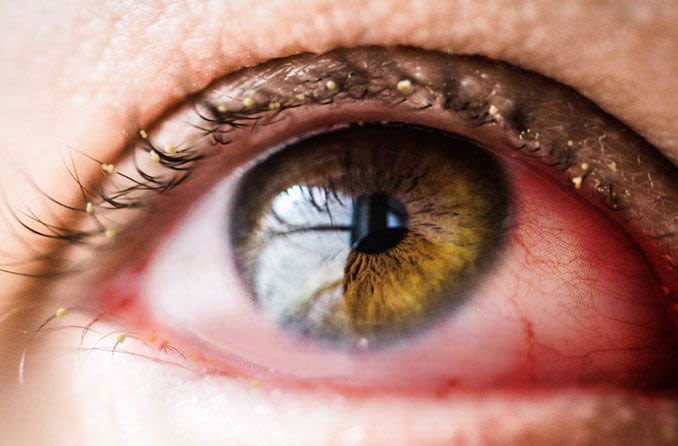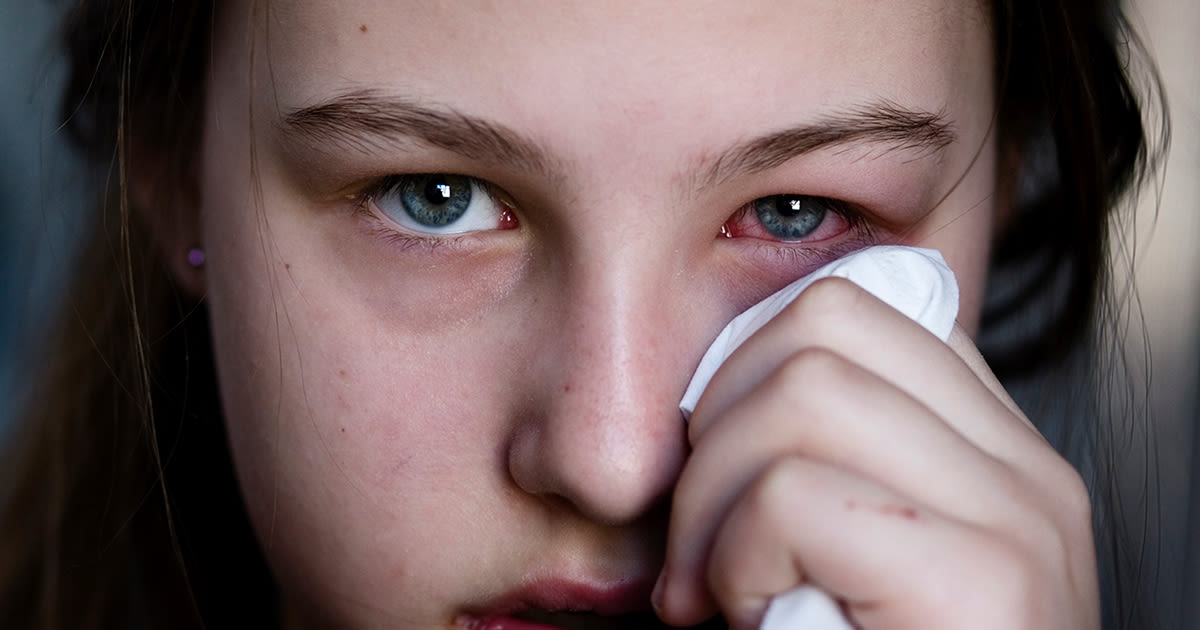Conjunctivitis types: Bacterial, allergic, viral and others

Conjunctivitis (or pink eye) is the inflammation of the conjunctiva - the transparent mucous membrane which covers the white part of the eye.
Infectious causes of an inflamed eye and conjunctivitis include bacteria, viruses and fungi. Non-infectious causes include allergies, foreign bodies and chemicals.
The phrase "pink eye" is commonly used in the US to refer to conjunctivitis, because pinkness or redness of the conjunctiva is one of the most noticeable symptoms.
Types of conjunctivitis
Bacterial conjunctivitis
Bacterial conjunctivitis is a common type of conjunctivitis, caused by bacteria that infect the eye through various sources of contamination. The bacteria can be spread through contact with an infected individual, exposure to contaminated surfaces or through other means such as sinus or ear infections.

Allergic conjunctivitis can result when your eyes encounter a substance to which they are overly sensitive, such as pollen in the air.
The most common types of bacteria that causes bacterial conjunctivitis includes Staphylococcus aureus, Haemophilus influenzae, Streptococcus pneumoniae and Pseudomonas aeruginosa. Bacterial conjunctivitis usually produces a thick eye discharge or pus and can affect one or both eyes.
Just like in any bacterial infection, antibiotics are required to eliminate the bacteria. Treatment of bacterial conjunctivitis is typically accomplished with topical antibiotic eye drops and/or eye ointments. The treatment usually takes from one to two weeks, depending on the severity of the infection.
Viral conjunctivitis
Viral conjunctivitis is another common type of pink eye that is highly contagious as airborne viruses can be spread through sneezing and coughing. Viral conjunctivitis can also accompany common viral upper respiratory infections such as measles, the flu or the common cold.
Viral conjunctivitis usually produces a watery discharge. Typically the infection starts in one eye and quickly spreads to the other eye.
Unlike with bacterial infections, antibiotics will not work against viruses. No eye drops or ointments are effective against the common viruses that cause viral conjunctivitis. But viral conjunctivitis is self-limited, which means it will go away by itself after a short time.
Typically with viral conjunctivitis, the third to the fifth days are the worst. After that, eyes begin to improve on their own.
Treatment of viral conjunctivitis usually involves supportive therapies, such as eye drops, that help reduce the symptoms: for example, vasoconstrictors to whiten the eye, decongestants to reduce the surface swelling and antihistamines to reduce occasional itching.
Treatments usually are continued for one to two weeks, depending on the severity of the infection.
Gonococcal and chlamydial conjunctivitis
You can get conjunctivitis from infections from sexually transmitted diseases including gonorrhea and chlamydia. Newborn babies may be exposed when they pass through the birth canal of an infected mother.
Trachoma is a form of chlamydial infection that causes scarring on the eye's surface. Trachoma is the world's leading cause of preventable blindness. If you are pregnant and suspect you may have a sexually transmitted disease, you need to be checked and treated for any infection before the birth of your baby.
Allergic conjunctivitis
This conjunctivitis caused by eye allergies is very common. Eye allergies, like other types, can be triggered by allergens including pollen, animal dander and dust mites.
The most common symptom of allergic conjunctivitis is itchy eyes, which may be relieved with special eye drops containing antihistamines to control allergic reactions.
Avoiding the allergen is also important in the treatment of allergic conjunctivitis. Allergic conjunctivitis can be seasonal or perennial (year-round), depending on the allergen causing the reaction.
Giant papillary conjunctivitis
This conjunctivitis usually impacts both eyes and often affects soft contact lens wearers. This condition may cause contact lens intolerance, itching, a heavy discharge, tearing and red bumps on the underside of the eyelids.
You'll need to stop wearing your contact lenses, at least for a little while. Your eye doctor may also recommend that you switch to a different type of contact lens, to reduce the chance of the conjunctivitis coming back.
Non-infectious conjunctivitis
This conjunctivitis from eye irritation causing pink eye symptoms that can result from many sources, including smoke, diesel exhaust, perfumes and certain chemicals. Some forms of conjunctivitis also result from sensitivity to certain ingested substances, including herbs such as eyebright and turmeric.
Certain forms of conjunctivitis, including giant papillary conjunctivitis, can be caused by the eye's immune responses, such as a reaction to wearing contact lenses or ocular prosthetics (artificial eyes). A reaction to preservatives in eye drops or ointments also can cause toxic conjunctivitis.
Concerned about conjunctivitis? Find an optician near you and schedule an appointment.
SEE RELATED: Conjunctivitis (pink eye) treatment
Page published on Wednesday, 26 June 2019






